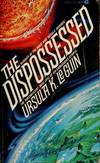
On the conversion of electric oscillations into continuous currents by means of a vacuum valve
by Fleming, John Ambrose
- Used
- first
- Condition
- See description
- Seller
-
Novato, California, United States
Payment Methods Accepted
About This Item
The Beginning of Electronics
Fleming, John Ambrose (1849-1945). On the conversion of electric oscillations into continuous currents by means of a vacuum valve. In Proceedings of the Royal Society. 74 (1905): 476-487. Whole volume, 8vo. [66, variously paginated], 580pp. Plates, text illustrations. Later library buckram, very minor rubbing and wear. Book-label and stamps of the Liverpool Athenaeum.
First Edition. Fleming's paper introducing the basic principle of the two-electrode vacuum tube or diode marked the beginning of electronics. Before the development of the transistor the vacuum tube became the first switch used in the earliest electronic computers. Using vacuum tubes as switches, the first general purpose electronic computer, the ENIAC, operated 10,000 times the speed of a human computer. By comparison, the Harvard Mark 1, which used electromechnical relays as switches, computed 100 times the speed of a human computer.
An electrical engineer and physicist who had worked with Thomas Edison's company in London, and a consultant to Guglielmo Marconi, Fleming invented and patented the two-electrode vacuum-tube rectifier, which he called the oscillation valve. This was called a thermionic valve, vacuum diode, kenotron, thermionic tube, or Fleming valve. Fleming' diode was an essential step in the development of radio, In 1906 Lee de Forest introduced a third electrode called the grid into the vacuum tube. The resulting triode could be used both as an amplifier and a switch. In this form the vacuum tube was used in radio receivers and radar until it was superseded by solid state electronics more than 50 years later. The first electronic computer, the ENIAC, used 18,000 vacuum tubes as switches. Vacuum tubes were used in electronic computers until the late 1950s, and they are still manufactured today for specialty analogue Hi-Fi equipment. Printing and the Mind of Man 396.
.Reviews
(Log in or Create an Account first!)
Details
- Bookseller
- Jeremy Norman & Co., Inc.
(US)
- Bookseller's Inventory #
- 40296
- Title
- On the conversion of electric oscillations into continuous currents by means of a vacuum valve
- Author
- Fleming, John Ambrose
- Book Condition
- Used
- Quantity Available
- 1
- Edition
- First edition
- Place of Publication
- London
- Date Published
- 1905
- Keywords
- electronic computing; technology ; ; physics ; electricity ; Printing and the Mind of Man ; electronics
Terms of Sale
Jeremy Norman & Co., Inc.
About the Seller
Jeremy Norman & Co., Inc.
About Jeremy Norman & Co., Inc.
Glossary
Some terminology that may be used in this description includes:
- Buckram
- A plain weave fabric normally made from cotton or linen which is stiffened with starch or other chemicals to cover the book...
- First Edition
- In book collecting, the first edition is the earliest published form of a book. A book may have more than one first edition in...
- Rubbing
- Abrasion or wear to the surface. Usually used in reference to a book's boards or dust-jacket.


